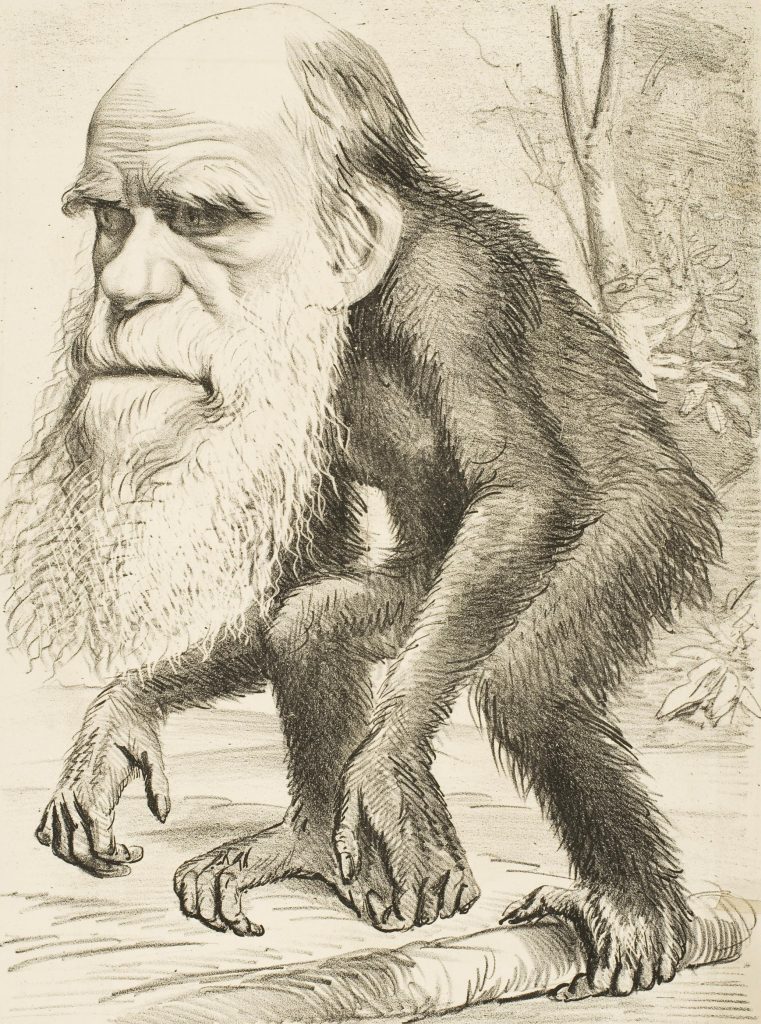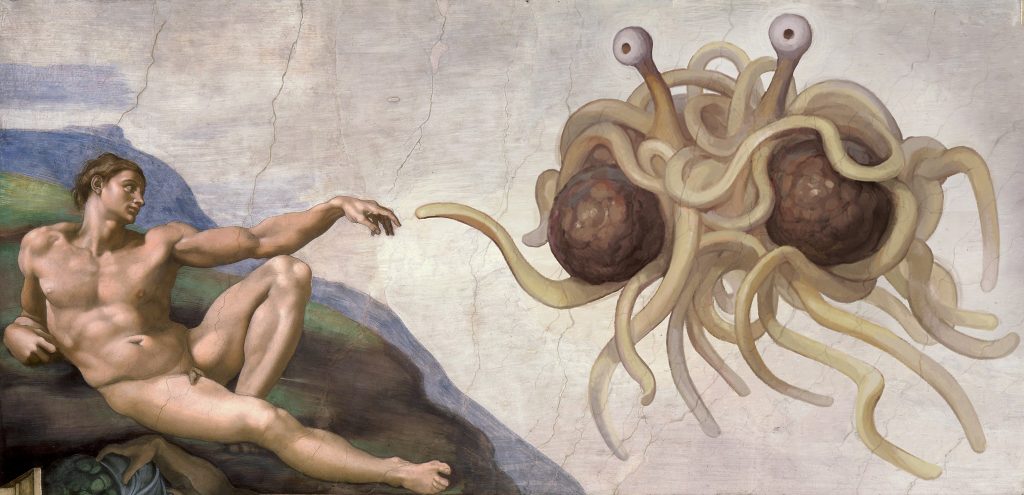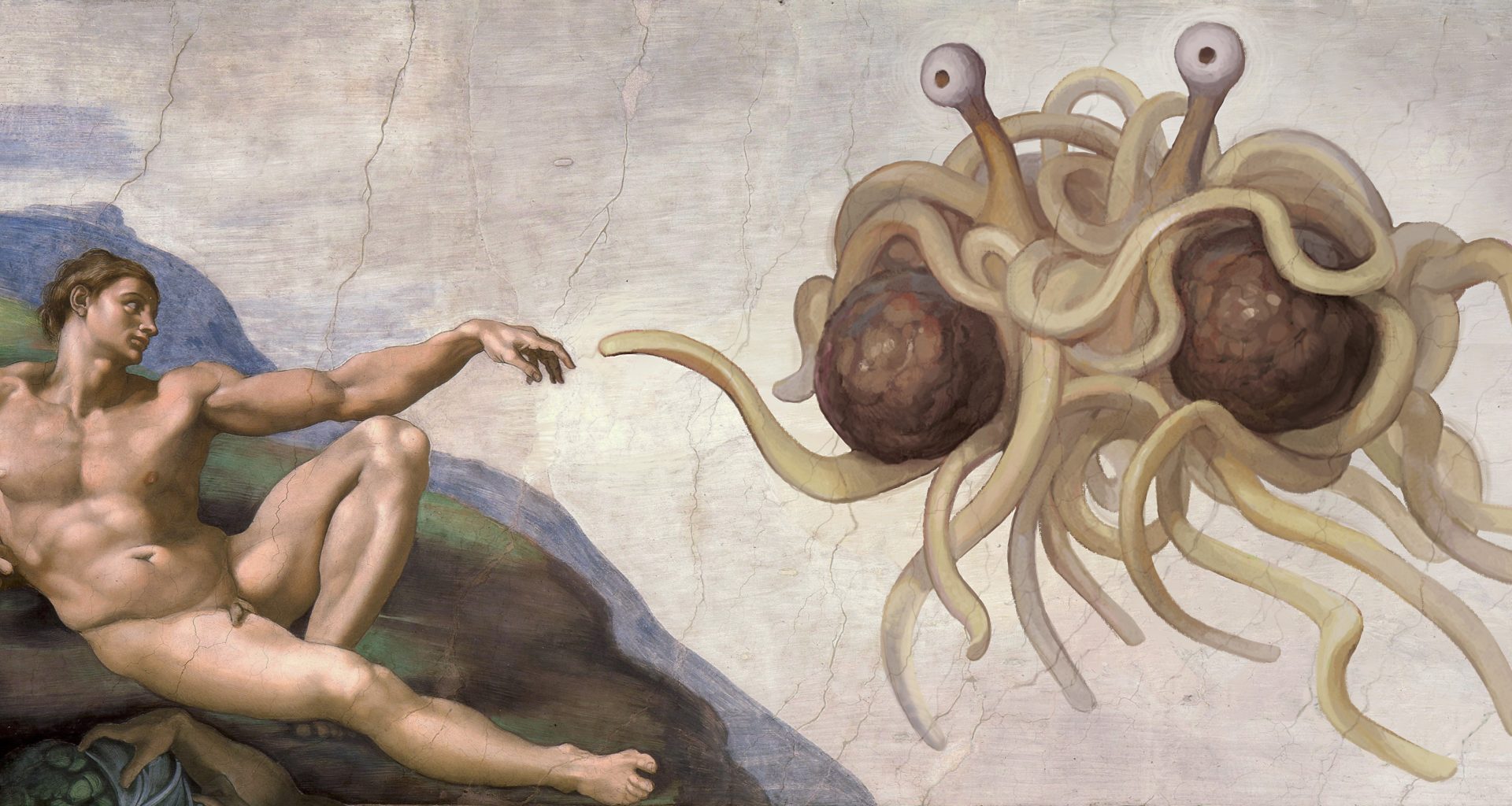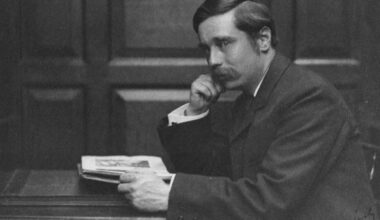
‘Would you be an atheist without the Internet?’
This was a question asked by Hemant Mehta in a 2009 post on his Friendly Atheist blog. His own answer was, ‘I don’t think I would be… when the doubt about my religion started to creep into my mind, I found my answers late at night online. It was those crude websites and email newsletters which helped me answer my questions and formed new ones.’
Others shared their reflections in the comments. One wrote, ‘I think I would have become an atheist eventually with or without the Internet, but it certainly hastened the process. I’d certainly be a less happy atheist, at any rate.’
In general, some agreed they would never have become atheists without the internet, and others said that while they would probably still be atheists, it would have been slower and more difficult without the internet, and they would have been far less engaged in the atheist community.
We live now in probably the least religious time in human history. And the internet no doubt has played an important role in this transformation, by providing a means for non-religious people to discover new arguments and to connect with others with a similar viewpoint.
With this in mind, in this article I want to think about the history of atheism with reference to three media revolutions: the invention of the printing press in the mid 1400s, the development of steam printing in the nineteenth century, and the arrival of the internet at the end of the twentieth century.
Each of these revolutions gradually allowed for the ever greater exchange of ideas and new possibilities for community. And each was accompanied by a rise in unbelief.
The Printing Press
Before the introduction of the printing press, there were doubters and sceptics among the masses, but their ideas almost always remained confined to them. There existed little way beyond word-of-mouth to spread one’s ideas – not to mention the danger of doing so.
In the medieval period, books were produced in scriptoria, where monks laboriously copied out texts by hand. China had already invented woodblock printing centuries before Europe, and Korea even had moveable-type printing at this time, yet Johannes Gutenberg’s invention of a movable-type printing press in Germany around 1440 sparked the printing revolution in Europe. By the 1500s, print shops had opened in every major European city and would replace time-consuming methods of copying texts by hand.

Books could now be produced far more efficiently, while avoiding problems of inaccuracies that cropped up in the course of the scribing process. Trade networks soon developed across Europe to allow books to be relatively easily bought and sold. This allowed knowledge to spread as it never had before.
The printing press was a boon to those who challenged the established religion. Martin Luther, whose gripes with the Catholic Church kicked off the Protestant Reformation in the early sixteenth century, relied on the printing press to spread his message. Luther’s famous 95 Theses, detailing the Catholic Church’s failings, were originally written in Latin, but they were quickly translated into German and other vernacular languages, and then printed for mass distribution. What was more, Luther and other Protestant propagandists printed cartoons to present simple arguments to those who could not read.
The Reformers wanted people to read the Bible for themselves. New editions were now commissioned and printed in the vernacular languages. Printed versions were not completely free from mistakes: the so-called Wicked Bible of 1631 accidentally omitted a crucial ‘not,’ leaving a verse to command, ‘Thou shalt commit adultery.’ More importantly, the printing revolution meant people could now read the Bible for themselves, in their own language, and draw their own conclusions. Furthermore, competing translations allowed linguistically sophisticated scholars to compare and contrast Bible texts and their shifting meanings.
The Reformation created a centuries-long conflict between Protestants and Catholics. With each side hammering away at the other’s arguments, this created a fertile soil for people to wonder if both sides were wrong.
As Elizabeth Eisenstein notes, since book printers cared most of all about earning money, this encouraged them to print controversial books. In Protestant areas, works that appeared on the Catholic List of Prohibited Books were of special interest to readers, in a kind of early modern ‘Streisand effect.’ The printers knew that printing these heterodox books would result in an audience eager to purchase – and they were the ones responsible for printing works that have become significant in the history of freethought, by authors such as Giordano Bruno, Machiavelli, and Rabelais.
Ancient and medieval sources were now more accessible, as were newer works. Students no longer were beholden to their professors for learning, but could access books directly. Dictionaries, atlases, and medical and scientific texts likewise made knowledge more accessible than ever, as did the development of weekly and monthly newspapers.
The impact of printing on the spread of actual atheism was not immediately apparent: it took time, even centuries, for the first atheists to emerge from the shadows. But it is nonetheless telling that the modern term ‘atheist’, which derives from ancient Greek, appeared first in Latin and other vernacular languages, including English, in the 1500s. Refutations and condemnations of atheism appeared in theological works, even if atheists themselves could not yet give voice to their views.
At a time when openly stated unbelief was punished with death, it made sense that few dared to express their views in print, even in letters. Those who did tended to meet a sticky end, and their published works usually went with them.
One who did publish was Geoffroy Vallée, a French nobleman who authored a pamphlet in 1573 called La Béatitude des Chrétiens, ou le Fléau de la Foy (The Beatitude of the Christians, or the Scourge of Faith). The short work rejected revelation and miracles, although it did allow for the possibility of a divine creator. Vallée had the work printed and tried his best to spread it, even sending copies out of France.
Under interrogation by civil authorities, Vallée tried everything he could, from denying to justifying to begging forgiveness, but was still hanged and his body burnt, along with almost all copies of his work – save one. When questioned, Vallée did not reveal where he got his ideas, but he claimed to have read somewhere – he would not say where – that Moses was but a magician. This seems to indicate that other heretical works might also have been circulating, even if no trace of them remains.
Similar stories to Vallée’s can also be told. In the second half of the seventeenth century, however, sceptical arguments were beginning to be found in works by those like Baruch Spinoza and Thomas Hobbes, and in the anonymously-written Theophrastus Redivivus. This book collected arguments from ancient Greece and Rome, as well as from contemporaries reputed to be sceptics and atheists, like Machiavelli, Vanini, Pomponazzi, and Montaigne. Even if some authors did not explicitly make atheist arguments, if they were taken together, their ideas could be reassembled to make strong statements of unbelief that questioned the truth of the Bible, the nature of the soul, the creation of the universe, and even God himself.
Aside from these explicitly anti-religious works, Christians themselves might, paradoxically, have helped to sow the seeds of atheist arguments. One theologian would devise a compelling ways to prove God’s existence, and then another would then come up with the strongest arguments against his opponent’s proofs – ‘steelmanning’ them – in order to construct better arguments for God’s existence. But this paradoxically gave ammunition to those, like the secretly atheist Catholic priest Jean Meslier, who drew upon these very same arguments to make the case against God in the early eighteenth century.
Steam Printing
In the Enlightenment, the criticism of religion flourished among the wealthy and educated. The undercurrent of doubt that ran through the previous centuries found fuller expression in salons like that of Baron d’Holbach in Paris, where, for the first time, atheists could discuss their ideas aloud, even if they still had to be cautious.
But these ideas remained confined mostly to the educated few, and there was little effort to spread these ideas to the masses.
Moreover, books were still prohibitively expensive. Even wealthy people needed to be discerning about which books to buy, given the cost of purchasing one. For working people in the early nineteenth century, the cost of a book might equate to several days’, or even weeks’, wages.
The invention of steam printing, however, is the second milestone in the story. Steam printing allowed books and newspapers to be printed much more cheaply and quickly than with manually operated presses. Whereas the hand-operated printing press could produce about 200 sheets per hour, the mechanised, steam-powered versions could produce 1,000 per hour early in the century – and by the 1870s, over 20,000 per hour.
The first steam-printing machine was used early in the nineteenth century, but the process was slow to be adopted by publishers, who clung to the old-fashioned methods. By the middle of the century, however, steam printing had become dominant. Between 1800 and 1850, the production of books per year had doubled, while the price halved.
Other new technologies further hastened the spread of knowledge. Railway lines criss-crossed Europe; circulating libraries and public reading rooms sprouted up; and electric telegraphy meant news could be transmitted across long distances almost instantly.
The nineteenth century also saw a new focus on education for the masses, and literacy rates rose accordingly. 69.3% of men and 54.8% of women in Britain were literate in 1851; by 1900, these numbers had jumped to 97.2% and 96.8% respectively.
The political context was changing too. The French Revolution at the end of the eighteenth century ended in bloodshed and the rise of a new autocrat, but it also demonstrated the power that the people could have to overthrow old political and religious hierarchies.
Even before the advent of steam printing, societies at the end of the eighteenth century sought to spread news to the masses about the French Revolution. In this milieu, political and religious radicalism went hand-in-hand. The London Corresponding Society began reprinting cheap editions of various freethought works, including by Thomas Paine, in the 1790s, before the British government, fearing the spread of revolutionary fervour from France, halted their activities.
Enterprising radical printers, like Richard Carlile, continued this mission in the early nineteenth century. In addition to his own radical newspaper, Carlile reprinted cheap editions of Paine’s works like The Age of Reason and The Rights of Man, as well as other freethought classics such as Baron d’Holbach’s System of Nature. When Carlile and his wife and sister were imprisoned for blasphemy, his work was carried on by Susannah Wright, who kept his bookshop open, although she too would land in prison for selling radical books.
The impact of each book sold was multiplied as the book inevitably changed hands. As Carlile himself explained: ‘Just calculate how many persons may read one copy of Age of Reason, if it be taken care of. I know several persons, who have kept copies, which they purchased of me in 1819, in constant use, in the way of lending them up to this time, and instances where a single copy has gone through fifty families, all approving as they read. This is the way to calculate the power of the Printing Press. … From December 1818, to December 1822 nearly twenty thousand copies will have gone into circulation.’
Soon afterwards, societies dedicated to Carlile and Paine’s radical religious and politics ideas sprang up across Britain. These radical groups often worked hand-in-hand with mechanics’ institutes, which had been founded in the late eighteenth century to encourage the education of working-class people.
Yet censorship and prosecution reigned, and those atheists who dared speak up faced time in prison for blasphemy or ‘obscenity’ – or at least the threat of such a punishment. (Though at least they survived with their lives; the last person executed in Britain for blasphemy was Thomas Aikenhead in 1697.)
Practical barriers existed as well that prevented the flow of free arguments. The British government applied various taxes – the so-called ‘taxes on knowledge’ – which aimed to stamp out smaller, radical newspapers by making them impossibly expensive. By the mid-century, however, these taxes were repealed after decades of campaigning, opening the way for the further spread of radical ideas.
The middle of the century saw a corresponding overflow of freethought literature with dozens of weekly freethought newspapers and periodicals published in a given year. The biggest were newspapers like George Holyoake’s The Reasoner, Charles Bradlaugh’s The National Reformer, and, indeed, G.W. Foote’s The Freethinker, which, aside from its writing, gained popularity in some quarters and dislike in others for its risqué cartoons.
In the United States, meanwhile, freethought newspapers, such as The Truth Seeker, appeared across the country, in big cities and small towns. These allowed atheists and freethinkers to know they were not alone, even if within their own town they were ‘village atheists’.
As the working classes mingled political radicalism and religious criticism, new organisations were formed. The National Secular Society, for example, was founded in 1866. Local secular societies across Britain likewise flourished.
While the new possibilities of printing were important, meetings in person and open-air lectures and debates were still big draws. However, the ability to print the details of these debates enabled their organisers to reach an even bigger audience.
While the Scientific Revolution of the seventeenth century did not give obvious evidence for God’s non-existence, the development of science in the nineteenth century more directly undermined the case for believing in God and the authority of the Bible. This can be seen, for example, in new geological findings in the first half of the century which caused geologists to re-estimate the Earth to be first hundreds of thousands and then millions of years old. Even if they did not fully comprehend the vast antiquity of the Earth, the new findings seriously challenged the traditional, Biblically derived idea that it was but a few thousand years old.
Traditional ideas about humanity’s place in the universe were thrown into even greater confusion with the emergence of evolutionary theory. The great nineteenth-century best-seller in evolution was actually Vestiges of the Natural History of Creation, anonymously written by the Edinburgh publisher Robert Chambers. This work set forth a naturalistic account of the evolution of the universe and all species, including humanity. Charles Darwin’s Origin of the Species (1859) was the stronger book scientifically, with a clearer mechanism for how evolution took place, yet its implications for humanity were confined to a single sentence: ‘light will be thrown on the origin of man and his history.’ Vestiges continued to outsell Origin for the remainder of the century, but both books forced many people to fundamentally rethink humanity’s place in the cosmos.

The new Biblical criticism, emerging primarily from Germany, also undermined religious faith. These new ideas challenged the authorship of the Bible and its accuracy, even though its main proponents were trying to salvage Christianity, not destroy it. Key works in this movement, like David Strauss’s Life of Jesus, translated into English by George Eliot, argued that the miracles recounted in the New Testament were mythical and had no basis in reality.
While Christians undertook such work to strengthen and refine their faith, freethinkers used similar techniques to capitalise on the new challenges to the Bible. One such popular work, called A Few Hundred Biblical Contradictions, pseudonymously written by Peter Lecount, ran to 1,180 pages. Other hostile dissections of the Bible included Robert Cooper’s Infidel’s Text-Book and Charles Bradlaugh’s The Bible: What It Is!
Cheap printing meant that all of these new ideas could find a much wider readership than ever before. Atheists and freethinkers would now know they were not alone. Even if the ultimate numbers of atheists remained small – Edward Royle, for example, estimated that at most 100,000 Britons would have supported the aims of the freethought movement – nevertheless, it seems to have been the first time in history that atheists began to publicly identify as such, at least in significant numbers, and to join with others with similar views.
The Internet
The twentieth century saw the arrival of new media like radio and television, which allowed for the proliferation of atheist and secular viewpoints to a wider audience. In 1955, Margaret Knight presented a radio broadcast on the BBC Home Service called ‘Morals Without Religion,’ while in 1970, the president of American Atheists, Madalyn Murray O’Hair, debated a Christian preacher on the Phil Donahue Show.
But the arrival of the internet afforded far more opportunities for atheists than ever before. As Teemu Taira writes, ‘it is perhaps not a serious exaggeration’ to use the word ‘revolution’ to talk about ‘the role of the Internet and social media for the increased visibility, interest in, and awareness of the atheism in the first decades of the twenty-first century.’
With the internet, information, reliable or otherwise, could be accessed without the need for a physical book or newspaper. In an isolated community, the religious sceptic could now participate in a community of other atheists. Whether in the United States, Egypt, or Indonesia, the sceptic was no longer alone.
In the early 2000s, the internet was a major factor in explaining the success of New Atheism. Even if New Atheists like Richard Dawkins or Christopher Hitchens published in traditional print mediums, their debates with Christians, and other religious people, received millions of views on YouTube.
Likewise, the internet made it easier for sceptics in religiously intolerant countries to covertly access their works. For example, as of 2016, the unofficial Arabic translation of Richard Dawkins’s The God Delusion had reportedly been downloaded over 10 million times.
But the internet did much more than merely spread the work of ‘celebrity atheists’. It also enabled individuals to express themselves and communicate with other like-minded people from across the world much more easily.
In an article on the Slate Star Codex blog, Scott Alexander gives a number of examples of influential websites from the early 2000s atheist scene. The Talk.Origins group carefully catalogued Christian arguments against evolution and their rebuttals, with examples including CA114. Many famous scientists were creationists, or CD610. The erosion rate of Niagara Falls’ rim indicates a young earth.
A similar group, the Skeptics’ Annotated Bible, catalogued every absurdity in the Bible. Another site compiled and ranked the top 15,000 (and counting) atheist quotations. The website of the Flying Spaghetti Monster, first created in 2005, received tens of millions of hits and quickly became an internet phenomenon.

In the above-mentioned article, Scott Alexander recalls
‘…just how intellectual the Internet was around the turn of the millennium. You would go to bulletin boards, have long and acrimonious debates over whether or not the Gospels were based on pagan myths. Then someone would check Vast Apologetics Library tektonics.org and repost every one of their twenty-eight different articles about all the pagan myths the Gospels weren’t based on, from Adonis (‘yet another unprofitable proposition for the copycat theorist’) to Zalmoxis (‘there is no comparison, other than by illicit collapsing of terminology and by unsubstantiated speculation’). Both sides had these vast pre-built armories full of facts and arguments to go to.’
The internet allowed atheists the chance to subject religion to criticism on a collective scale. But it also provided a possibility for anonymity and a supportive community as they encountered these kinds of arguments for the first time. Consider the case of the Clergy Project, set up for clergy members who were doubters or full-blown non-believers to be able to talk about the issues they faced, anonymously. The Richard Dawkins Foundation site likewise gave people the chance to tell their own stories, including on its Converts’ Corner.
Blogging sites, such as PZ Myers’s Pharyngula blog, Rebecca Watson’s SkepChick blog, and Hemant Mehta’s Friendly Atheist blog, likewise became a huge medium for atheists, while atheist YouTubers could create their own content and connect with others. Most importantly, perhaps, the Reddit subforum r/atheism, created in 2008, was at the time one of the most popular subreddits and now has 2.7 million members. This allowed people to share stories of their own experiences as atheists and have discussions, as well as to share memes and the like mocking religion.
These developments also created the unfortunate stereotype of the ‘internet atheist’. According to the Urban Dictionary, this is ‘typically an angry teenager or other power inhibited individual who thinks that all religion across the globe is either Islamic Terrorist or American Christian Fundamentalist and that their arguments are sound because they have watched a Dawkins video online.’
More generally, there came a frustration with the trolling, mocking nature of online atheism and the ways in which online atheist spaces seemed to be dominated by white men. This led to the creation of the site Atheism+, active from 2012 to 2016, which aimed to discuss other issues like sexism, racism, and social justice from an atheist perspective.
Even with these flaws and imbalances, the internet offered a much more democratic and much less hierarchical space than any of the preceding mediums. But it is also true that the internet was not the sole factor that accounts for the increasing number of atheists. For most, online engagement was part of a larger puzzle that involved books, discussions with family and friends, and real-life encounters with other atheists. The website, meetup.com, allowed atheists who wouldn’t otherwise have met in person to do so. In this way, the internet did not replace physical interactions and the forming of communities – but it did sometimes facilitate them.
Conclusion
It would be too simplistic to say that more media means more atheists. Why some ideas gain traction at some times and not others concerns political, social, and economic factors that I have not been able to discuss in detail here. The industrialisation and urbanisation of the nineteenth century, as people relocated to cities and away from traditional rural communities, could well be equally important in explaining the growth of irreligion.
Moreover, the impact of communication revolutions might not always lead to the loss of religion in straightforward ways. New mediums also provide new diversions. Whether it be nineteenth-century novels, or social media and streaming in the twenty-first century, the expansion of options for entertainment, and the creation of new imaginary worlds, might have led people simply to have less time for engaging with religion, along with other, more traditional forms of civil society.
Another corollary is that while media revolutions have the power to disrupt societies, this disruption can also produce religious revivals. We have already seen how Martin Luther and the reformers used print to propagate a new form of Christianity; this may have been radical, but it was not friendly to atheism. The same was true in the nineteenth century, with the Religious Tract Society and the British and Foreign Bible Society using print to spread their message. Groups like these were sometimes much more effective, thanks to the much greater wealth at their disposal than was available to their comparatively impoverished freethought opponents. The internet has also helped to connect religious communities in new ways; for example, church services were streamed on Zoom during the pandemic.
Furthermore, just because new media allows for the spread of information, that does not by any means guarantee the accuracy of such information. If anything, in recent years, especially since 2016, we have seen how the internet allows for the spread of all kinds of misinformation, fake news, quackery, and conspiracy theories, at a scale not possible before.
It seems that opening possibilities for spreading information will inevitably also mean a spread of disinformation. Yet it is hard to think of an alternative. One must simply have confidence that over time, through the messy process of debate and discussion, truth will prevail. There are, again inevitably, issues of power (economic, institutional, and so forth) that will hinder and distort our collective search for truth, but if there is indeed a truth out there that can be obtained, as free as possible a flow of information seems the preferable – and perhaps only – option we can choose to get there.
As far as religious beliefs specifically are concerned, what the history of these media revolutions shows, above all, is that the more freedom there is to discuss and investigate them, the more they are found wanting.









1 comment
The history of freethought publishing is a story that has been inadequately told and is closely linked to the publication of birth control literature. I am pleased that this interesting article goes some way to addressing the issue, although there is plenty of scope for further research. It was Richard Carlile who wrote and published ‘Every Woman’s Book’, the first book in English advocating birth control and explaining birth control techniques. 28 Stonecutter Street, effectively the bookselling and publishing headquarters of the National Secular Society and the secularist movement in the United Kingdom from 1877 to 1900, was also the address from which the first mass circulation birth control pamphlets appeared.
George Eliot gets too much credit for translating Strauss’s ‘Life of Jesus’. The first English edition was published by Henry Hetherington and Joseph Taylor in four volumes between 1842 and 1844. It was anonymously translated from the third German edition and is one of the most important books of the nineteenth century; a milestone in the growth of sceptical thought which has continued to this day. The Chapman Bros., 1846 edition (which was translated by George Eliot) is often incorrectly claimed as the first English edition.
Your email address will not be published. Comments are subject to our Community Guidelines. Required fields are marked *
Donate